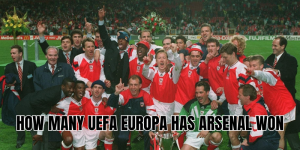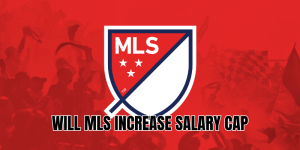In the clash of continents, is Ligue 1 better than MLS isn’t a simple yes-or-no question—but ModiFoot will guide you through the strengths and weaknesses of each. In many respects, Ligue 1 still holds the upper hand—especially in terms of tradition, tactical quality, and global prestige—while MLS is closing the gap in fanbase, revenues, and competitiveness. Which one is “better” depends on what you value most: history, style, financial muscle, or growth potential.
Let’s dive deep into comparing the two leagues on multiple fronts: attendance & fan culture, finances & revenues, playing style & player development, international success & reputation. By the end, you’ll have a clearer picture—and maybe your own answer.
Attendance and fan culture

Crowds matter—they breathe life into a league. On this front, both Ligue 1 and MLS show impressive but different strengths.
- Average attendance figures: Ligue 1 averaged around 26,900 fans per match in 2023-24. MLS, by contrast, averages about 23,200-23,500.
- Big match appeal: Ligue 1 has clubs with massive stadiums—Marseille, Lyon, Lens, PSG—with frequent sell-outs that touch 60,000+. MLS has pulled off some huge single-match attendances (e.g. Messi’s Interiami matches, LA derbies), but these are exceptions rather than the norm.
- Fan culture & history: Ligue 1 benefits, regional identity (Saint-Étienne, Marseille, Lyon, Bordeaux etc.). MLS is younger, more geographically spread out; its fanbases are passionate, but the history is shorter and evolving.
Verdict on culture & attendance: Ligue 1 is ahead in consistency and historical gravitas, though MLS is doing extremely well in growth and occasional peaks that match or exceed European games in spectacle.
Financials, Revenues, and Growth Potential

When you talk about “better” in modern football, money plays a major role. How do these leagues compare financially?
- Total league revenue: In the 2022-23 season, Ligue 1 clubs collectively generated about €2.37 billion.
- MLS growth: MLS revenue is growing fast. Some reports project that MLS revenues recently passed US$2 billion and are approaching the revenue levels of some mid-tier European leagues, including France’s. ortsvalue.com.br)
- Club valuations: The value of MLS franchises has risen sharply. Big market clubs (Inter Miami, LAFC, Galaxy) are now billion-dollar valued. But even the richest clubs in Ligue 1 (like PSG) have much larger global brand value and revenue inflows, especially through European competitions.
- Broadcast rights & media: Ligue 1 has had recent struggles with media rights deals and sees that as a pressure point. Meanwhile, MLS’s media deals are rising, especially with the allure of star players, expansion, and appeal in the U.S./Canada markets.
Verdict on financials: Ligue 1 is more established, with larger revenues in many seasons and greater profit potential.
Style of Play, Player Development, and Talent

This is where many purists focus: how good is the football, and how strong is the pipeline of players?
- Technical & tactical level: Ligue 1 is part of the “Big Five” UEFA leagues. It tends to attract high technical standards, coaching, and a more defined tactical identity. Many top players (young and experienced) use Ligue 1 either as a development ground or a stepping stone.
- MLS style evolving: MLS has long been known for athleticism, physicality, pace, and growing tactical discipline. The league is improving its coaching infrastructure, analytics, youth academies. It’s becoming more technical and consistent.
- Player development & exports: Ligue 1 has a strong record of producing and exporting top talent to bigger clubs in Europe: young French players are heavily scouted, many Ligue 1 stars move on to Premier League, Bundesliga, etc. MLS is catching up: more U.S. and Canadian players are getting opportunities abroad; MLS is also exporting talent (for example, Moïse Bombito to Ligue 1) and improving youth systems.
Verdict on playing style & talent: Ligue 1 remains superior in depth of technical talent and tradition of high tactical standards. But MLS is no slouch: rapid improvement, especially in youth, and increasing competitiveness of playing style.
International Success,ss, Reputation, and Global Reach
Which league wins more on the big stage—Europe and global perception?
- European competitions: Ligue 1 clubs regularly qualify for the UEFA Champions League, Europa League, and Conference League. Paris Saint-Germain has been a staple in deep Champions League runs; teams like Marseille, Monaco, Lyon have historic reputations. MLS clubs do not participate in UEFA competitions, their international contests are limited to CONCACAF region.
- Global star attraction: Ligue 1 still attracts stars. MLS now also brings in big-names (Messi, etc.), but often they are in later stages of their careers, which boosts visibility but not always competitive level.
- Brand/reputation: Ligue 1 is recognized globally as one of Europe’s Top 5 leagues. It often appears in league rankings, coefficients, global football analyses. MLS’s reputation is rising: it’s increasingly seen as a league of opportunity, or a destination for certain stars, and a growth engine for North American soccer. But it’s not yet in the up.
Verdict on international success & reputation: Ligue 1 leads comfortably here, though MLS is making meaningful gains in terms of global visibility—especially.
Weaknesses & Challenges
For balance, it’s important to also see downside for both leagues.
Ligue 1
- Dependence on PSG: PSG dominates Ligue 1 so heavily that the title race often lacks suspense. Fans and critics argue this weakens overall competitiveness.
- Financial instability: drop in broadcast revenues, rights disputes, and net losses over some seasons. Ligue 1 clubs (outside the top few) often rely on player sales to balance books.
- League visibility: while big, Ligue 1 struggles compared to Premier League or La Liga in attracting global TV contracts; some clubs suffer.
MLS
- Ceiling on player wages and competitive performance: MLS has salary caps, roster rules, and designated player slots that limit how many top star players they can carry. This can curb the ability to compete (in perception) with European clubs.
- No participation in UEFA: limits the chance to prove strength vs top European competition.
- Growth pains: travel distances, stadium quality varies, season schedule misaligned with global football calendar; sometimes inconsistency in competitive balance despite efforts.
So, Is Ligue 1 Better Than MLS?
Put simply: yes, in traditional measures—history, tactical depth, European prestige, and sustained performance—Ligue 1 is still better than MLS. But it’s not a massive gap anymore in certain areas. In attendance trends, revenues in youth development, infrastructure growth, and fan engagement, MLS is catching up quickly and in some metrics already comparable.
If your measure is “which league is more exciting, increasing fast, has rising visibility,” MLS might win. If you mean “which league has more tradition, consistently stronger teams and players, dee,” that crown belongs to Ligue 1—for now.
Conclusion
Is Ligue 1 better than MLS? For many football fans and analysts, yes, but with important caveats. Ligue 1 wins when it comes to tradition, consistency, player quality, and international prestige. MLS is growing like wildfire—attendance, valuations, media deals, fan fervor—they’re making huge leaps.
For you, the fan: if you want classic European rivalries, tactical battles, stars in their prime, go Ligue 1. If you love growth stories, energetic games, big names arriving, and maybe a less predictable League table, then MLS has huge appeal too.
ModiFoot invites you to share your thoughts: which do you value more—heritage or momentum? And stay tuned—because in football, things change fast, and the answer could shift.






